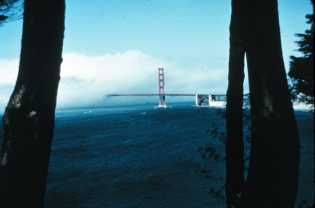Clouds and PrecipitationCondensation occurs either near the surface or aloft and results in the formation of small droplets of water. Condensation at the surface results in dew formation when the near surface air temperature drops to the dew point temperature. This often occurs at night under cloudless skies when the air is humid. Under cloudless skies, emitted terrestrial radiation penetrates to space, cooling the surface which then cools the near surface air. FogFog is a cloud that forms near the ground. Fog, like any other product of condensation, requires the air temperature to decrease to the dew point temperature where upon the air is at saturation. Cooling of the near surface air is accomplished either through contact cooling (a diabatic process) or adiabatic cooling.
Radiation fog forms during the evening under cloudless skies and with little to no wind. Under these conditions, terrestrial longwave radiation is readily emitted to space without absorption by clouds. The loss of longwave radiation causes the surface temperature to decrease inducing a negative sensible heat transfer between the cooling surface and the slightly warmer air in contact with the surface. As the near surface air cools to the dew point the fog forms.
A radiation fog is shown in Figure 7.15 above. To the left of the picture is a grass field and to the right is an asphalt parking lot. As the sun heats the surface during the early morning it "burns off" the fog. Because the grass field has a higher albedo and cooler surface, the fog is closer to the surface than over the warmer parking lot. |


